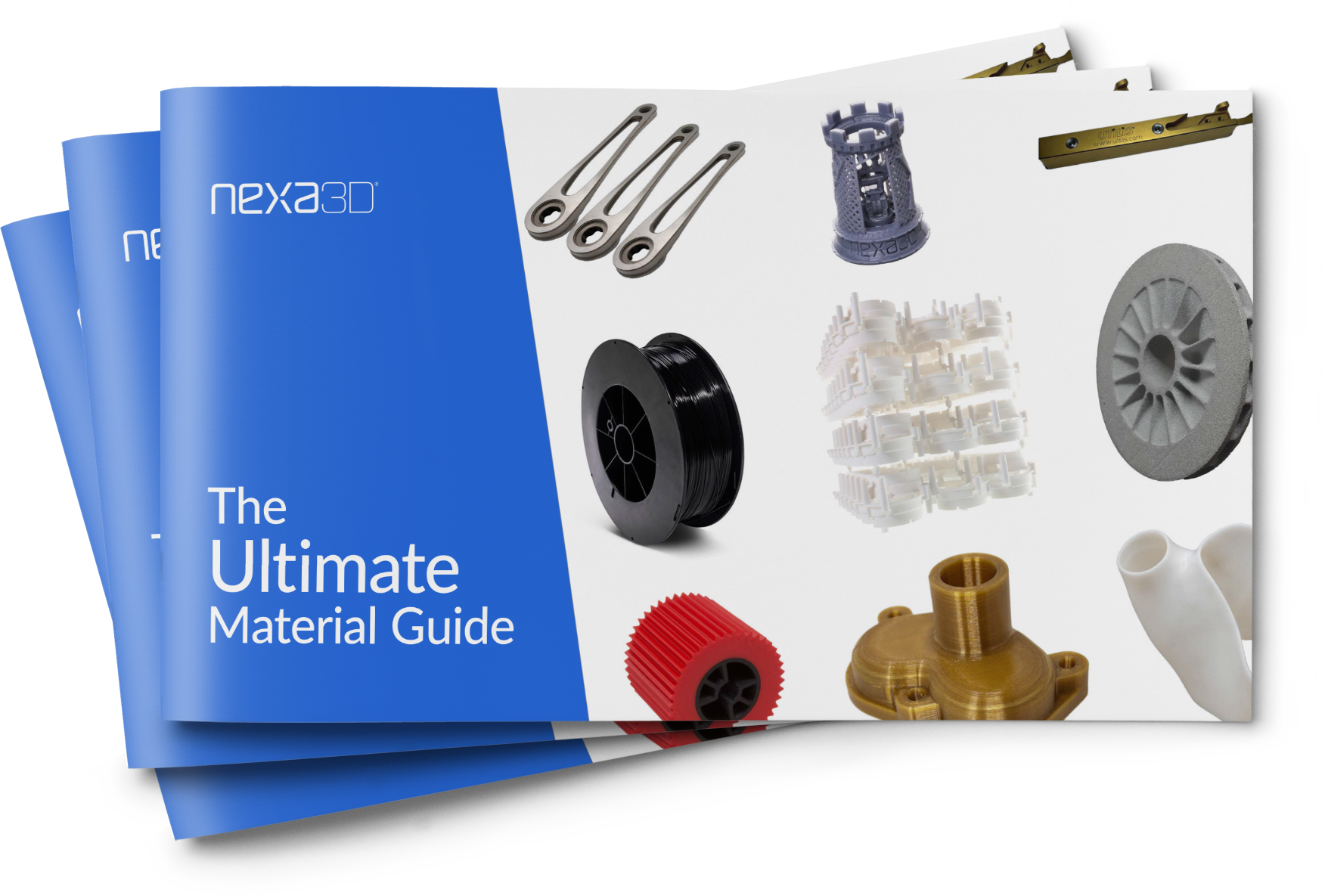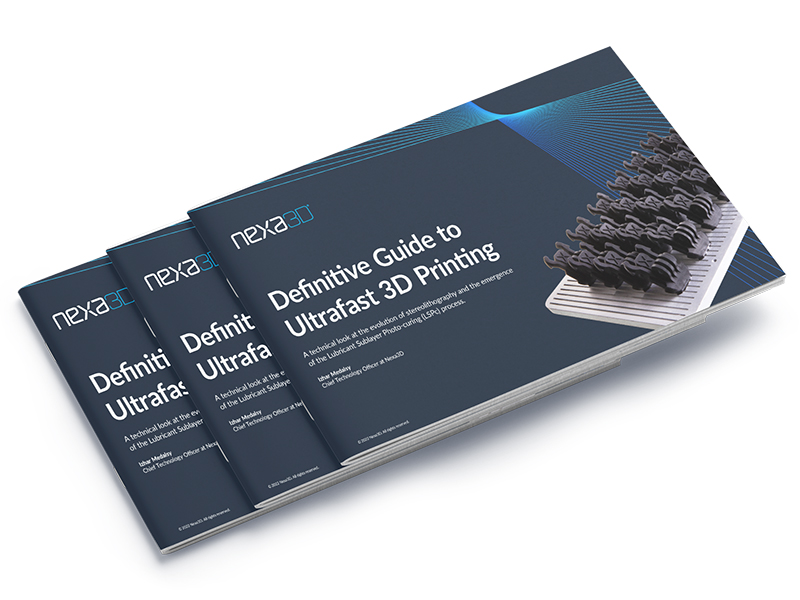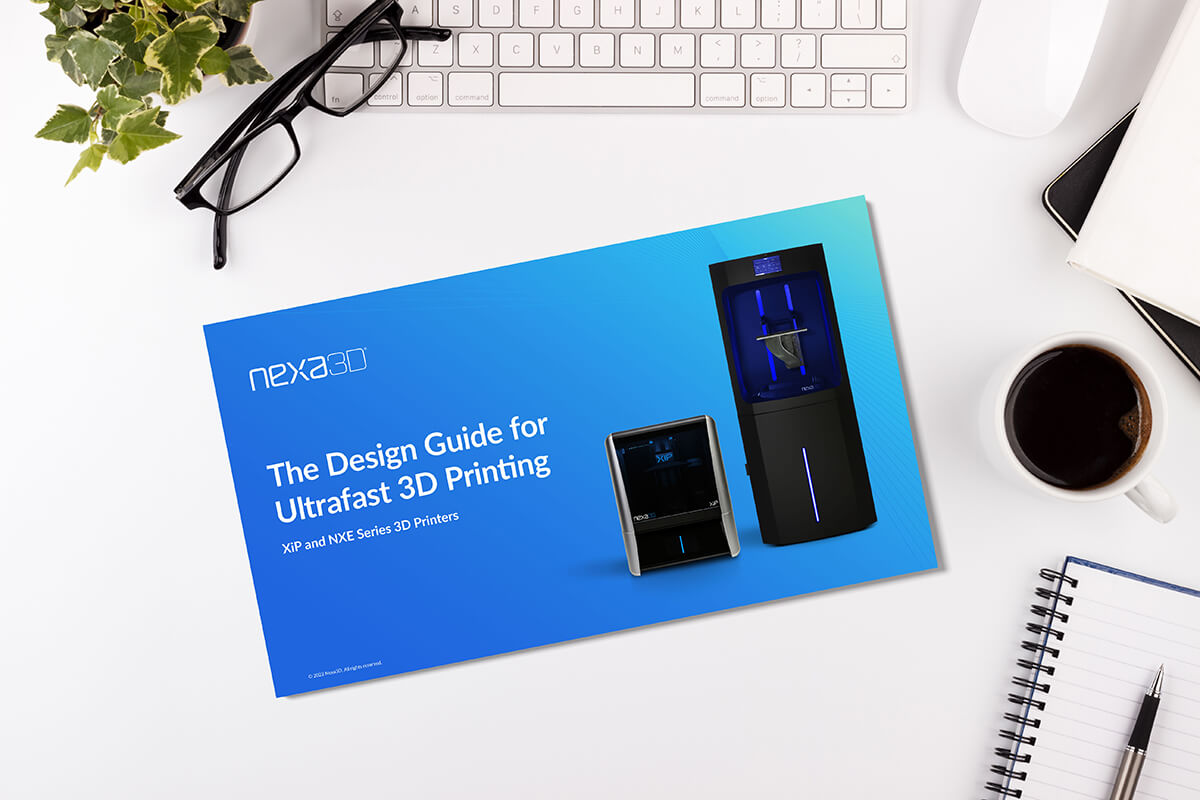White Papers and Guides
Learn more about resin 3D printing and Lubricant Sublayer Photo-curing process by downloading our technical guides
NEW Ultimate Material Guide
Resins, Thermoplastics, and Metals for High-Performance 3D Printing
We developed the Ultimate Material Guide to simplify material selection for 3D printing and ensure you get the best results. With in-depth insights into our advanced materials—resins, thermoplastics, and metals—this guide helps you make informed decisions, select the ideal material for your project, and achieve optimal performance, whether you’re prototyping or moving into full-scale production.

2024 Material Guide for Filament 3D Printing
High-Performance 3D Printing Filaments: Nylons, ESD-Safe, and Carbon Fiber Polymers
This guide covers Essentium and 3D-Fuel’s high-performance nylons, ESD-safe, and carbon fiber filaments. These materials offer durability, resistance, strength, and printability. Compatible with open hardware, they ensure flexibility. Enhance your projects with our cutting-edge materials.

Polyurethane Molds Processing Guideline: xPRO1100-Black
3D Printing Accelerates Prototype Production and Feedback
This guide focuses on optimizing the use of xPRO1100-Black for 3D printing polyurethane molds, demonstrating how to accelerate prototype production and enhance design evaluations.

2024 SLS Material Guide
Latest and greatest SLS materials in 2024 featuring TPC, TPU, PA11, Stainless Steels, and more.
This guide explores the diverse range of plastic and metal materials, laying the foundation for crafting robust, impeccable, and specialized parts tailored to meet the diverse needs of various industries. Additionally, it investigates the advanced technologies driving ultrafast, high-throughput 3D printing, providing a comprehensive overview of the latest breakthroughs fueling engineering excellence.

2024 Resin Material Guide
Latest and greatest resin materials in 2024 featuring xMOLD, xESD, FR, xDENT, and more.
This guide explores an extensive array of new materials for 2024, serving as the foundation for crafting robust, impeccable, heat-resistant, ESD-compliant, flexible, and various other specialized parts. Furthermore, it explores the cutting-edge technologies propelling ultrafast, high-throughput industrial resin 3D printing, providing a comprehensive overview of the latest advancements.


Production Guide for Metal 3D Printing
Introducing ColdMetalFusion (CMF), a cutting-edge sinter-based 3D-printing technology that pairs seamlessly with Nexa3D’s QLS Series printers. CMF enables the production of high-quality metal parts at a scale of over 100,000 parts per year, without compromising on quality. This guide provides an overview of CMF’s features, the sinter-based 3D printing process, the characteristics of metal 3D printed parts, and its potential for revolutionizing metal part production. Say goodbye to traditional 3D printing constraints and embrace the future of metal manufacturing with ColdMetalFusion.
Download Guide
Ultimate Guide for SLS 3D Printing
When it comes to additive manufacturing technologies for real production, few are as widespread as Powder Bed Fusion (PBF). PBF machines provide quality, performance, and throughput that have proven to be production capable. While capable, how do you know if it is the right choice for your production needs? And if it is, which PBF technology should you choose?
Download Guide
Design Guide for 3D Printed Tooling
Freeform injection molding combines the freedom of 3D printing with the reliability and mechanical performance of conventional injection molding. A complex tool is printed using a dissolvable xMOLD resin that is compatible with the actual molding feedstock to create prototypes and production parts in final grade plastics – within hours and at a fraction of conventional tooling costs. This comprehensive guide will walk you through all the design considerations and guidelines to optimize your 3D printed tool design.
Download Guide
Quick Guide to Choosing Between Filament and Resin 3D Printers
If you want to buy a 3D printer for professional use, you must make an important decision. Choosing between a resin 3D printer and a filament 3D printer. Both printers are ideal for enthusiasts and hobbyists and understanding the advantages and disadvantages of these printers will help you make a well-informed purchasing decision.
We’ve curated this guide specifically to assist you in making your decision between the resin 3D printer and the filament 3D printer.
Download Guide
Technical Review of LSPc® | Next Gen mSLA
A technical overview of masked stereolithography (mSLA) and the emergence of Nexa3D’s patented Lubricant Sublayer Photo-curing (LSPc®) process that enables fast print speeds.
We take a closer look at the evolution of the stereolithography process that ultimately led to the invention of masked stereolithography and then the Lubricant Sublayer Photo-curing technology, a 3D printing process that is orders of magnitude faster than the original stereolithography process.
Download Guide
Ultrafast 3D Printing a Design Guide for LSPc Printing
When using resin 3D printers (or any 3D printers for that matter) there are several design and prep considerations to ensure that your prints come out successfully every time.
This guide focuses on design guidelines for LSPc 3D printing as well as file and print preparations for ultrafast 3D printing.
Download Guide